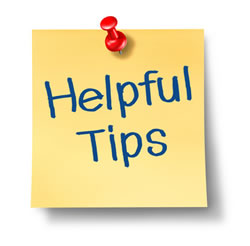May 2016
 An In-Depth Look at Neck Pain
An In-Depth Look at Neck Pain
Neck pain can even travel from the neck to other areas of the body, spreading symptoms, as well as large amounts of pain. The pain is described in various ways, depending on the area of the neck that is most greatly afflicted. Some who have pains in the joints or vertebrae along the spine consider the pain to be a stiff, numbing pain, that occurs for long periods of time (sometimes lasting as long as several hours). Neck muscles that are damaged can have a lasting, “nagging” effect for those who have stretched certain neck muscles beyond capacity, or who have over-pronated and torn other moving parts of the neck, such as tendons or ligaments. Both of these types of neck pains can lead to immobility when it comes to turning their head, or have difficulty moving the neck in any way without experiencing pain of some sort. Not only can neck pain cause lower back pain, it can also cause pain in the shoulders. However, sometimes neck pain is a result of a shoulder injury, such as in the case of soft tissue damage in the shoulders or an injury to the shoulder tendons or ligaments. Neck pain can stand alone by itself, or be a symptom of other pains throughout the entire body. There are also a variety of conditions that affect the heart, the spinal cord, and the lungs, and which can lead to pain in the neck.
 The Health Benefits of Aloe Vera
The Health Benefits of Aloe Vera
Most people just associate Aloe Vera with being an effective natural remedy for treating sunburn, and it is true, Aloe Vera does contain many properties that can help soothe damaged skin. However, it has many more health benefits than being used as an after-sun treatment.
Aloe Vera has proven anti-inflammatory, antioxidant, and antibacterial properties which can help relieve the pain caused by arthritis, gout, and fibromyalgia, as well as help with digestive and dental health.
Read the Full Article, Click Here>>
Tips of the Month
Each month, we provide our subscribers with some insightful tips and information to help them Enjoy Living Again. Check them out and share them with friends and family:
10 Jobs That Are Hard on Your Joints
Office workers may not have to handle heavy machinery like jackhammers but sitting at a desk for long spells and using a keyboard and mouse still poses a risk to hands, wrists, and back. The Arthritis Society, based in Canada, recommends taking a break every 20 minutes to give yourself the ability to stretch these areas and to get blood flowing through your body. You should also evaluate your chair, ensuring that it provides support for the lower and mid back, and allows your elbows to rest at a 90-degree angle to the keyboard.
How to Prevent an Uncomfortable Road Trip
One of the main causes of a sore back is a continuously jarred spine. A bumpy ride can create discomforts even if you usually don’t experience back pain, but if you already suffer from a back injury, a bumpy ride can be completely unbearable. Here are some tips to make the ride as smooth as possible:
- If the shocks on your car are worn, consider replacing them before you head out on your trip. The shocks of your car work to prevent the springs of your car from oscillating. To test the shocks on your car, push on a corner of your car and see how many times the car bounces. If it bounces more than twice, your shocks are worn and should be replaced.
- If possible, take your trip in an SUV instead of a passenger car. Not only do these offer more space in the vehicle for passengers and drivers, but larger vehicles also tend to provide smoother rides than smaller vehicles.
- Consider purchasing a good pillow to sit on that can absorb some of the shock from the car bumping along on the road or highway. There are even commercially made car seat cushions designed to provide support for your back and to absorb some of the shock of driving.
What to Know Before Purchasing New Shoes: A Guide to Avoiding Foot Pain
Shoes play a valuable role in our lives. They protect our feet while supporting our bodies, and come in various shapes and sizes to either help us occupationally, athletically, recreationally, and fashionably. Finding the right shoe for the right kind of activity is not always a simple task, and often a little bit of research on the shoes you are buying can help you out tremendously in the long run. Factors such as foot type, activity, amount of usage from the shoes, and the environment they will be used in, are all things to consider when selecting and purchasing new shoes. You want to make the most out of your shoes, being sure that they cover your needs and are the appropriate type of shoe to use. It’s easy to get confused about what shoe works best for what activity. In this article we examine the most common types of shoes worn, what you need to know before you shoe shop, and information that will keep your new shoes from causing foot related pain or injury.
- Log in to post comments

